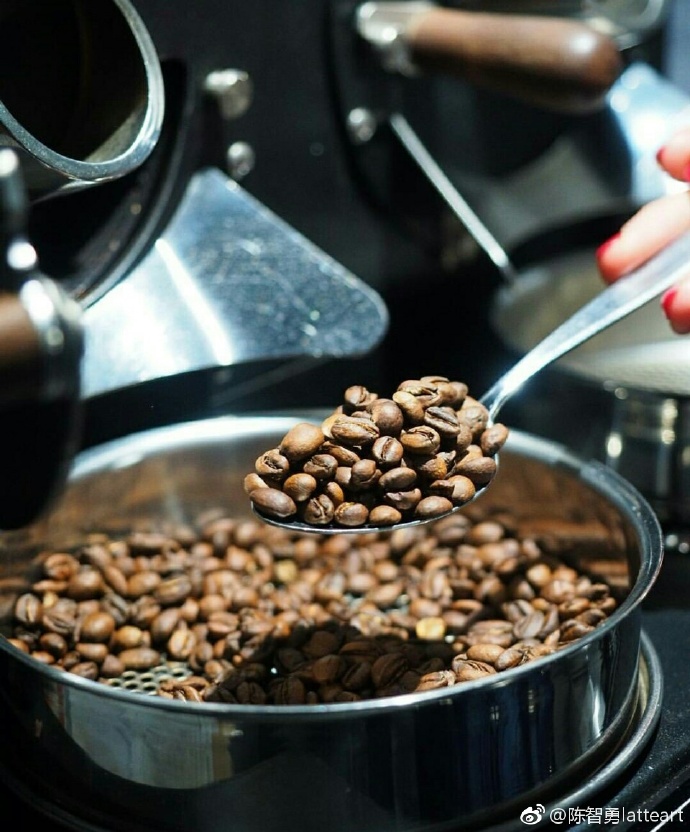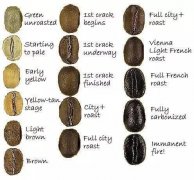Coffee bean roasting is a chemical reaction that takes place. Coffee flavor is reflected.
The structure of coffee is a well-developed matrix, which improves the consistency of quality and contributes to the uniform spread of heat during baking. Cellulose exists in coffee in the form of embedded in lignocellulose (an amorphous matrix containing hemicellulose and cellulose-containing lignin), which form matrix unit walls (cell walls). Hemicellulase (hemicellusloses) is a polysaccharide composed of bifurcated sugar and uronic acid. Lignin is particularly noteworthy because it is a highly polymerized aromatic substance.
When the distribution temperature exceeds 446 degrees Fahrenheit (230 degrees Celsius) and the surface temperature of beans exceeds 536 degrees Fahrenheit (280 degrees Celsius), the cell wall is severely damaged. The actual temperature will change according to other factors. The second explosion associated with deep baking is the rupture of this matrix, which may be accompanied by volatilization of lignin and other aromatic hydrocarbons. Under controlled roasting conditions, the ambient temperature of beans should never exceed 536 degrees Fahrenheit (280 degrees Celsius). A wider safety line should limit the maximum ambient temperature to 520 degrees Fahrenheit (271.1 degrees Celsius). These temperature limits can minimize damage to the cell matrix, increase the complexity of performance in the cup, increase roasting yield and product shelf life cycle.
The color of raw bean changes from green to yellow when the bean temperature is more than 100℃, and the dehydration reaction is lost when the moisture is on, resulting in a smell similar to baking bread; when the bean temperature is > 120,130 ℃, the color changes to light brown; the bean temperature about 150℃ produces the smell of stir-frying similar to barley; the bean temperature about 180℃ begins to produce green smoke, and the first explosion begins to produce chemical pyrolysis reaction, releasing a large amount of CO2, burst sound, color turns brown, and the size of the bean increases. The first explosion of the bean temperature is about 210℃, the color continues to darken; the bean temperature is about 220℃ ~ 230℃, the color continues to darken, showing dark brown, and the coffee bean surface produces oil; although the bean temperature is about 240℃ ~ 270℃, the darker the bean color is, the darker the bean color is, the more gas is released, the volume continues to expand, the coffee bean surface oils out, and the coffee aroma changes fully. The bean temperature is about 270℃ to stop releasing smoke, the color is black, the appearance becomes dark, the volume is no longer bigger; the bean temperature is about 300℃, the bean has become black, it is puffy and fragile, and the aroma disappears completely, becoming a carbonized state; the general actual baking temperature range is 185240℃. In addition to the influence of temperature on the flavor of coffee, the way and equipment of roasting also have an effect.

Important Notice :
前街咖啡 FrontStreet Coffee has moved to new addredd:
FrontStreet Coffee Address: 315,Donghua East Road,GuangZhou
Tel:020 38364473
- Prev

How to become a professional coffee roaster coffee roasting experience
For more professional coffee exchanges, please scan the code to follow Wechat: FrontStreetCoffee was in Europe in early April. Seven bakers bake Costa Rica with the same machine and the same baking degree. Tarasu. In terms of techniques, they are all different, at least in details, so who is right? Everyone has to go back to the cupping desk for answers. Someone changed the tune three times after the explosion.
- Next

Copenhagen Royal Fine Coffee Organic Coffee
Royal Copenhagen RoyalCopenhagen: has always had a high-quality evaluation of the royal Copenhagen. It has an unshakable position in the coffee market. At the table meeting, the royal Copenhagen, which enjoys the highest quality. There is no way to change the status of coffee in pursuit of the highest quality. The basic reason for the mellow flavor is that it is used from Brazil, the world-famous Crassi.
Related
- Beginners will see the "Coffee pull flower" guide!
- What is the difference between ice blog purified milk and ordinary milk coffee?
- Why is the Philippines the largest producer of crops in Liberia?
- For coffee extraction, should the fine powder be retained?
- How does extracted espresso fill pressed powder? How much strength does it take to press the powder?
- How to make jasmine cold extract coffee? Is the jasmine + latte good?
- Will this little toy really make the coffee taste better? How does Lily Drip affect coffee extraction?
- Will the action of slapping the filter cup also affect coffee extraction?
- What's the difference between powder-to-water ratio and powder-to-liquid ratio?
- What is the Ethiopian local species? What does it have to do with Heirloom native species?

